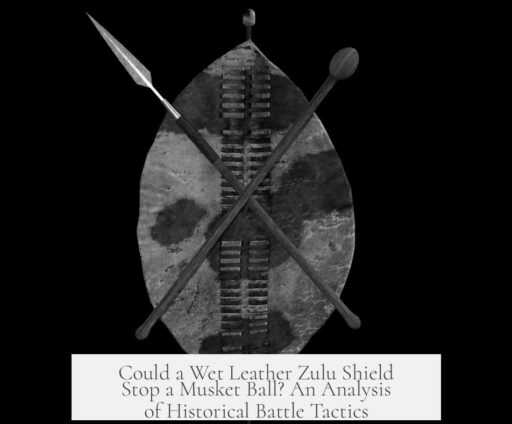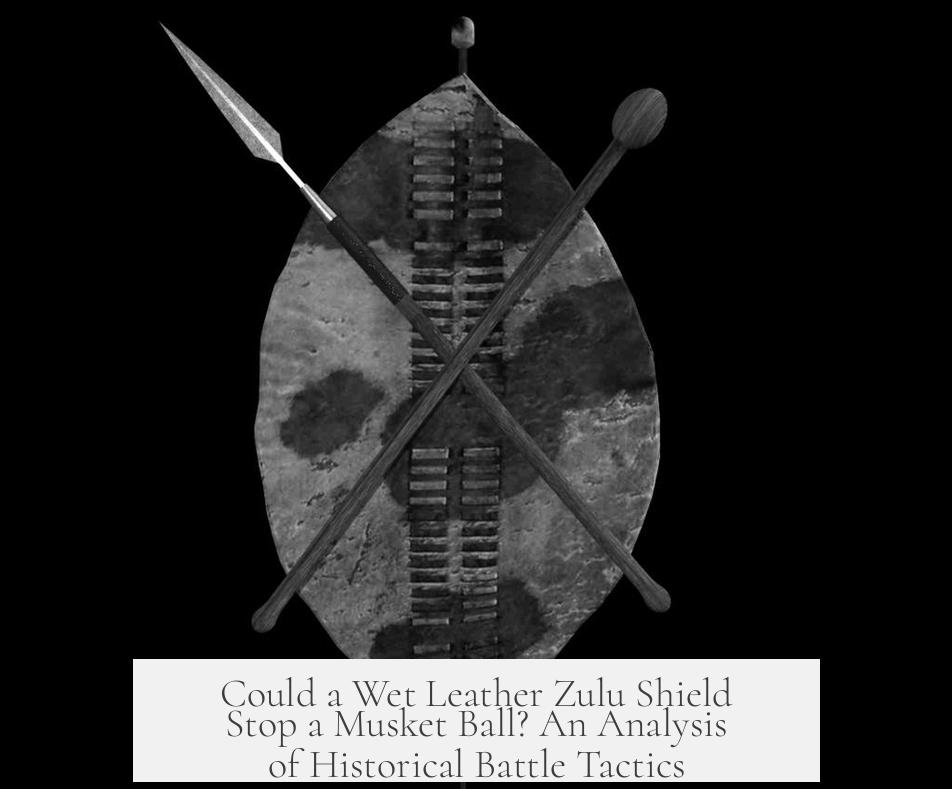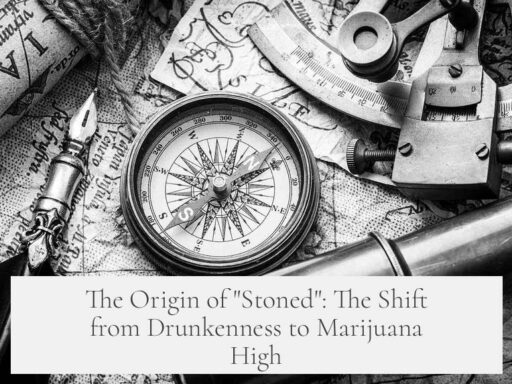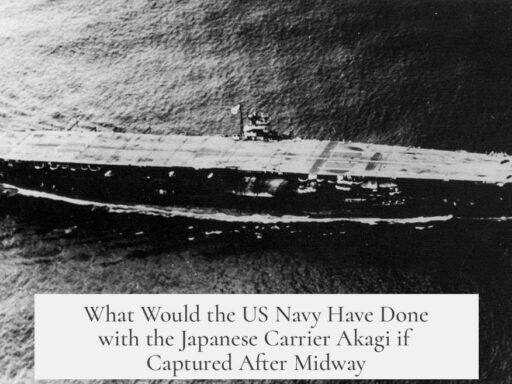A wet leather Zulu shield could occasionally stop a musket ball under very specific conditions, but it is highly unlikely to stop a fully charged, properly fired musket shot or any modern rifle bullet. The claim primarily applies to smoothbore muskets firing low-velocity or spent balls at longer ranges, rather than the powerful Martini-Henry rifles used during the later Anglo-Zulu War.
The origin of this belief traces back to Shaka Zulu’s assertion that dipping shields in water before battle could reduce the damage caused by musket balls fired from a distance. Shaka spoke about utilizing the shield tactically to survive the interval between musket volleys, allowing Zulu warriors to close in for melee combat. His claim relates to early 19th-century smoothbore muskets wielded by white traders and settlers during the 1830s and 1840s. These muskets had limited velocity and accuracy, especially over long distances, and Shaka’s shield method supposedly helped mitigate that disadvantage.
However, this statement should be viewed cautiously. There is no recorded evidence of Shaka or later Zulu leaders systematically testing or endorsing the practice as bulletproof protection. It is likely based on observations of low-powered musket balls losing force after long-distance travel and in combination with the shield’s leather and wood construction when wet, which might slightly soften impact or cause less penetration.
Popular culture figures, like Trevor Noah, have inaccurately claimed that Zulu warriors routinely soaked their shields to stop bullets during the 1879 Anglo-Zulu War. This is incorrect for several reasons. Shaka Zulu had died in 1828, decades before the Anglo-Zulu War. The British forces in 1879 used the Martini-Henry rifle, a breech-loading firearm firing a .450 caliber bullet at approximately 1,300 feet per second. This rifle was far more lethal and penetrative than the earlier smoothbore muskets and would easily pierce any leather shield regardless of being wet.
During the mid to late 19th century, obsolete European firearms flooded the African markets. The Zulu obtained many flintlock muskets like the Brown Bess, often cheaply and without sufficient ammunition supply. Warriors sometimes resorted to loading scrap metal or stones into their muskets due to lack of proper bullets and powder. These conditions led to musket balls being “undercharged,” resulting in lower velocity and poorer accuracy. Such low-powered ammunition might occasionally fail to penetrate leather shields, especially if the shields were wet and temporarily toughened.
A leather shield’s stopping power depends heavily on the projectile’s velocity, size, and shape. The typical smoothbore musket like the Brown Bess fires a .75 caliber lead ball at muzzle velocities between 800 and 1,200 feet per second. A well-charged round this powerful is unlikely to be stopped by a soaked leather shield, particularly at close range. Nonetheless, after traveling beyond 200 yards, the ball loses velocity and energy, which lowers its penetration. This loss might explain some anecdotal accounts where shields deflected spent musket balls.
| Weapon | Bullet Caliber | Muzzle Velocity (ft/s) | Effective Range (yards) | Shield Penetration Likelihood |
|---|---|---|---|---|
| Brown Bess Musket | .75 caliber lead ball | 800-1,200 | Up to 100; weak beyond 200 | Possible at long range, unlikely close |
| Martini-Henry Rifle | .450 caliber bullet | ~1,300 | 400 (effective); 1,000 (lethal) | Practically impossible to stop |
By the 1879 Anglo-Zulu War, the Martini-Henry rifle rendered the wet leather shield ineffective against bullets. Historic records from battles like Isandlwana confirm that Zulu shields did not provide bulletproof protection. They were bone-dry and failed to stop bullets during close-range combat. The dramatic Zulu successes originated from tactical speed, discipline, and exploitation of British mistakes, not because shields deflected bullets.
There are no accounts in 1879 battle reports describing bullets bouncing off Zulu shields. Historian Ian Knight, an expert on the Anglo-Zulu War, confirms that even low-velocity impacts from Martini-Henry rounds would penetrate leather shields. There is also no evidence the Zulu prepared or soaked their shields during official campaigns for bullet resistance. The wet shield story appears absent from contemporary Zulu or British oral and written records.
Overall, the wet shield claim seems to be a myth grown from a mix of historical facts and misunderstandings. It is plausible that during earlier conflicts, underpowered or poorly loaded muskets produced low-velocity projectiles that sometimes failed to penetrate wet leather shields. However, these occurrences did not translate to a general or reliable form of bullet protection. The portrayal that Zulu shields stopped powerful rifle bullets during later wars is an exaggerated legend.
- Shaka’s wet shield claim refers to early smoothbore muskets at long range, not modern rifles.
- Obsolete, under-charged muskets might have had low-impact shots stopped by wet leather shields.
- Martini-Henry rifles used in 1879 easily penetrated all Zulu shields regardless of being wet.
- There is no historical evidence Zulu routinely soaked shields or used them as bulletproof gear.
- Zulu victories depended on tactics, numbers, and British errors, not shield bulletproofing.
For further discussion and examination of Zulu firearms and shield usage, see related analyses on AskHistorians and detailed commentaries by historians and enthusiasts. These sources provide nuanced insight into the capabilities and limitations of period weapons and armor in southern African warfare.
Could a Wet, Leather Zulu Shield Really Stop a Musket Ball?
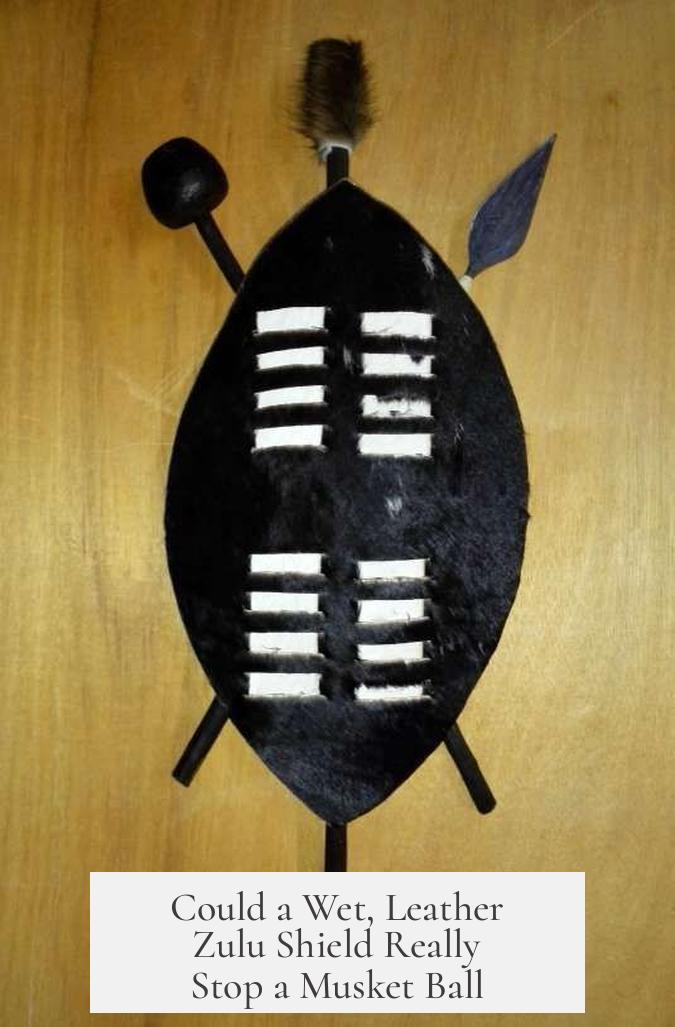
Can dousing a leather Zulu shield in water turn it into a bulletproof barrier against muskets? The short answer: not really. But the story is far more fascinating—and layered—than a simple yes or no. Let’s unpack this legend, its roots, and what history (plus a bit of physics) tells us.
Shaka Zulu, the famed 19th-century warrior-king, supposedly claimed that if his soldiers dipped their leather shields in water before battle, they could stop musket balls fired from a distance. His idea was that by warding off distant shots, they could close in quickly and overwhelm enemies before their guns could be reloaded. Sounds pretty savvy, right?
But that claim is murky. For starters, Shaka spoke of smoothbore muskets used by white traders in the 1830s and 1840s—not the advanced rifles of later wars. These muskets were clunky, slow to load, and notoriously inaccurate at ranges beyond 100 yards. Plus, Shaka’s story never got rigorous testing or official confirmation by him or subsequent Zulu leaders.
Fast forward to 2019, Trevor Noah added fuel to the myth by asserting that Shaka’s soaked shields stopped bullets during the 1879 Anglo-Zulu War. This is where fact and fiction part ways sharply. Shaka died in 1828, long before the battle. By 1879, King Cetshwayo ruled the Zulu, and British soldiers unleashed Martini-Henry rifles—lethal, single-shot breech-loaders firing .450 caliber bullets at muzzle velocities around 1,300 feet per second. Those things were no joke.
The Zulu’s leather shields weren’t about to stop those high-speed projectiles. Historian Ian Knight, an expert on this very conflict, confirms that no credible accounts exist describing bullets bouncing off shields during the war. The shields were battle-proven instruments but certainly not bulletproof armor.
So, where does the myth come from? The answer lies in the less glamorous, oft-overlooked details of firearms trade and ammunition scarcity among the Zulu before 1879.
By mid-1800s, European traders flooded southern Africa with obsolete muskets—think flintlocks like the Brown Bess. These were sold cheaply—sometimes for the price of a sheep. But the problems started when ammunition and gunpowder became scarce. Zulu warriors often had to improvise by loading their guns with scrap metal or stones. Their powder horns meant they frequently guessed the correct slip of powder, often giving poor quality, undercharged shots.
An undercharged smoothbore musket fired projectiles slower, less accurately, and with less penetrating power. In such situations, it’s plausible that a tough, wet leather shield could stop or slow down a spent musket ball or a scrap metal bullet. But these are underpowered shots—far from the military-grade, fully charged musket balls shattering through bone and flesh at 800 to 1,200 feet per second.
Moreover, the leather shields had their limits. Smoothbore muskets—when properly loaded—had an effective range of about 100 yards. Past that, musket balls lost velocity and could bounce or deflect more easily, which might be the origin of folk tales about shields stopping bullets.
The idea that soaking shields in water would dramatically increase their stopping power is interesting but unproven. It makes intuitive sense that wet leather might be tougher, but no primary accounts from battles back this up. For instance, at the infamous Battle of Isandlwana in 1879, the Zulu carried bone-dry shields. British bullets easily penetrated them, yet the Zulu still won due to disciplined attacks and British mistakes—not miracle shields.
So, what’s the final takeaway?
At best, wet leather shields may have occasionally stopped low-velocity, spent musket balls or scrap bullets from underpowered firearms used by African warriors in earlier decades. But the notion that they could stop the deadly Martini-Henry rifle rounds of the Anglo-Zulu War is a myth amplified over time and popularized in modern media.
This legend reminds us how stories evolve. A practical, tactical idea from Shaka’s time became Hollywood lore of “bulletproof” shields. Yet, the real tale showcases resourceful warriors adapting to imperfect weaponry and scarce supplies without the luxury of flawless arms.
If you’re curious about more rich details on firearms and the Zulu, consider a deep dive here: Detailed post on firearms in Zulu warfare. Discussions by historians and enthusiasts alike shed light on how myth and history intertwine in this intriguing chapter.
Practical Lessons from the Legend
- Understand the tech: Firearms evolve. A weapon that struggles in one era may be lethal in the next.
- Context is king: Knowing the exact weapon, ammunition quality, and tactics is crucial before drawing conclusions.
- Don’t believe everything you hear: Even historians sometimes repeat attractive myths—dig for evidence!
- Respect adaptation: The Zulu’s use of leather shields was about mobility, protection, and tradition—not bulletproofing.
In the end, history is rarely black-and-white. It’s a textured picture painted with facts, rumors, and exaggerations. The soaked leather shield stopping British bullets? It’s a cool story, but in real life, those bullets laughed at wet leather.
